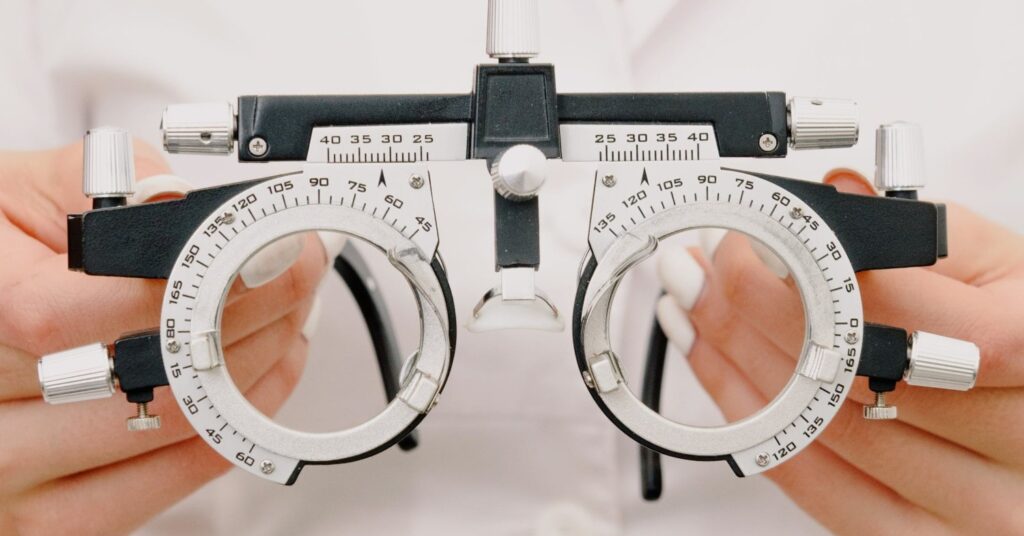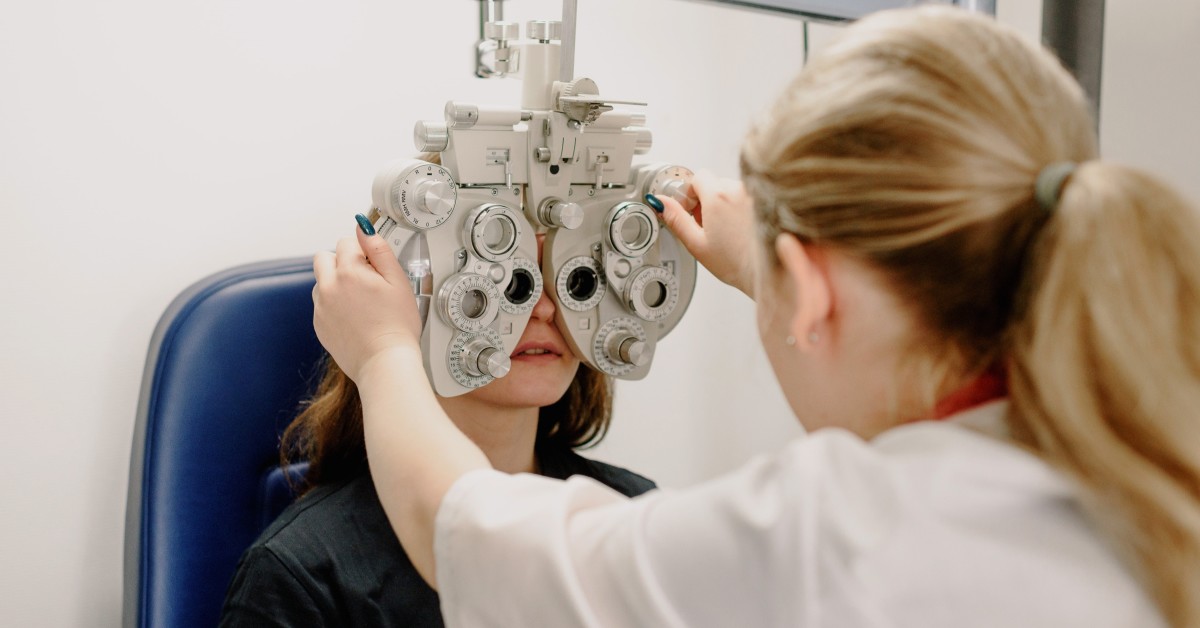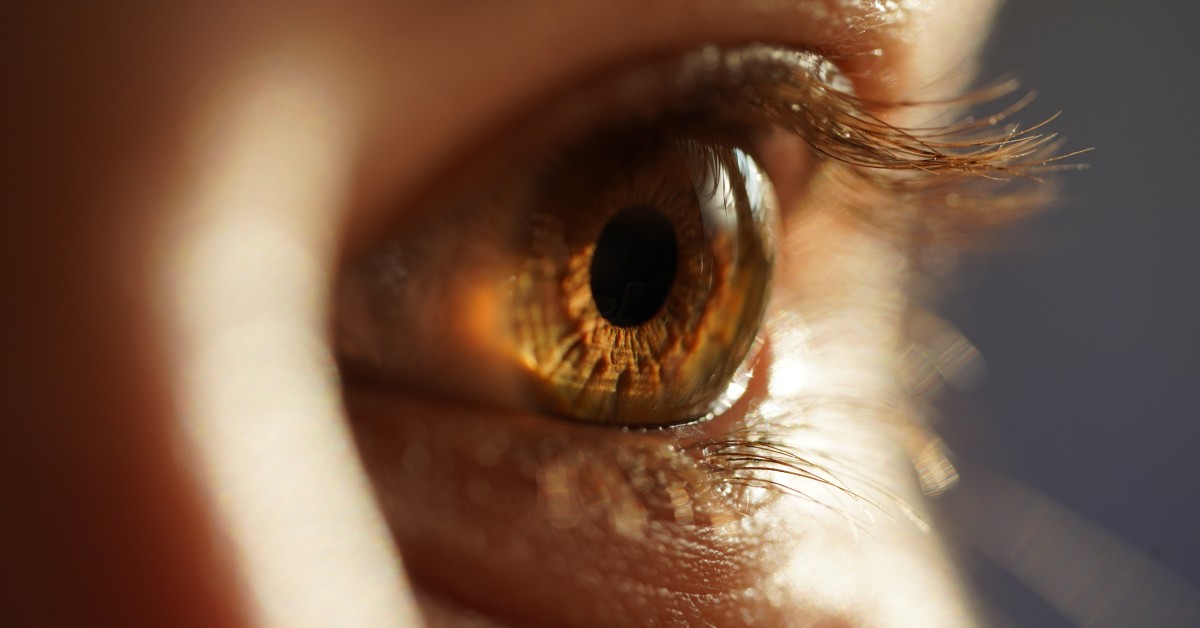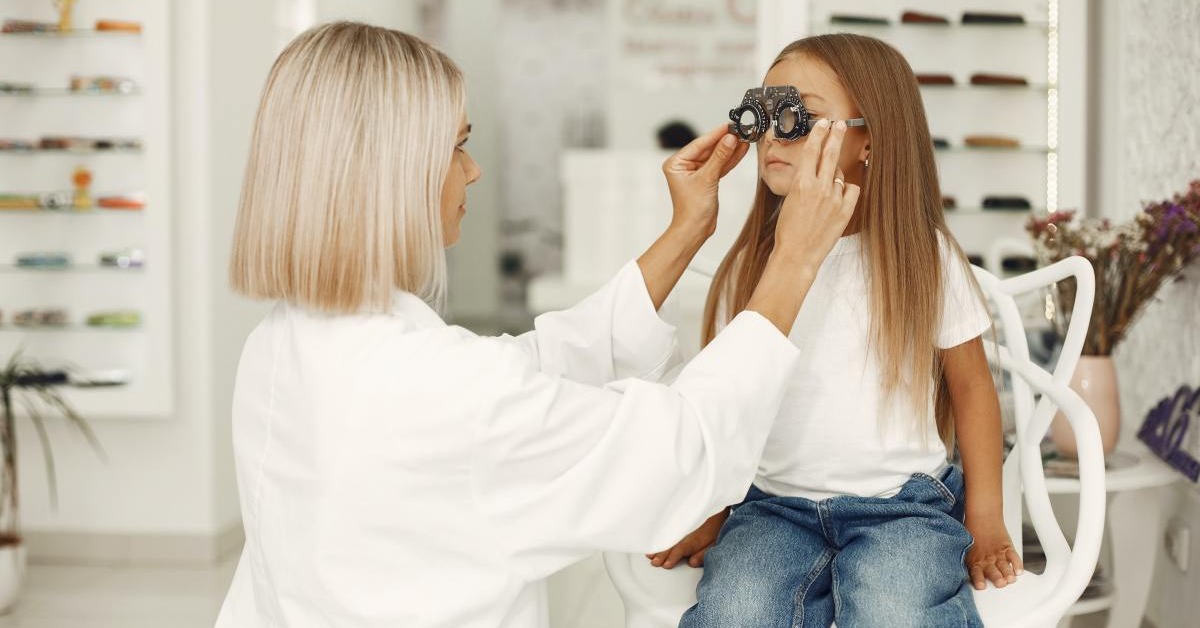
Why Become a Sports Vision Optometrist?
Sports vision optometrists work with patients at all levels, including [...]

Most people take healthy vision for granted. Even those who require eyeglasses or contact lenses to correct refractive errors (near- and farsightedness) become so accustomed to them that they rarely reflect on how essential these remedies are to their lives.
In contrast, people who suffer from severe vision loss—whose visual acuity is as low as 20/70—rely on eye doctors to a far greater degree. These patients often need specialized treatment from low-vision optometrists.
Not all low-vision conditions can be resolved through prescriptive eyewear or pharmacological and surgical treatment, unfortunately. In such cases, low-vision optometrists help their patients adapt to living with limited eyesight through assistive devices and rehabilitation strategies.
If the prospect of working on the more challenging aspects of eye care intrigues you, then a career in low-vision optometry may be for you. In this article, we explore the question: why become a low-vision optometrist? In addition, we cover:
A visual acuity score of 20/70 signifies that a person is “partially sighted.” In layman’s terms, this means what they see on an eye chart from 20 feet away is what someone with 20/20 vision sees from 70 feet away. While the 20/70 score does not classify them as legally blind (that designation requires 20/200 vision), they experience significant difficulty engaging in daily activities like reading, watching television, cooking, and attending to personal finances. They also may have trouble differentiating colors and shapes. This degree of vision impairment sometimes affects people’s mental health and can result in clinical depression.
A low-vision optometrist is an eye care professional specially trained to help people with low vision—particularly those whose eyesight cannot be corrected through eyewear, medication, or surgery. Low-vision optometrists often treat their patients with special assistive devices or therapeutic rehabilitations that help them make most of the sight they have and function to the best of their ability.
Primarily, low-vision optometrists conduct eye exams to determine the patient’s degree of visual impairment. This requires expertise in eye disease that leads to low vision, such as macular degeneration, glaucoma, cataracts, and diabetic retinopathy.
They then determine a course of treatment and/or rehabilitation. Low vision sometimes is addressed through surgery or medicine, depending on the diagnosis. Prescription eye drops can be effective against glaucoma. Certain injectable medicines can stave off or even improve so-called wet age-related macular degeneration (wet AMD). People suffering from cataracts benefit from replacement of the clouded-over lens with an intra-ocular lens (IOL).
Failing any surgical and/or medicinal solution, low-vision patients are treated with adaptive and rehabilitative options. To some degree, this is the true specialty of low-vision optometrists, as it is essential to their profession that they possess the skills to reassure their patients that their conditions can be successfully managed and, in some instances, improved. This is particularly important when dealing with someone with an incurable condition like retinitis pigmentosa, an (often-inherited) eye disease that causes cells in the retina to break down over time, or Stargardt disease, a condition in which fatty tissue builds up on the macula.
Rehabilitation strategies include eyewear (glasses or lenses), assistive devices that enable optical or electronic magnification—such as magnifying glasses, large print books, and audio readers—and glare-reducing filters for those with light sensitivity. There also are helpful strategies such as contrast enhancement (e.g., using dark dishes on a light tablecloth), eccentric viewing, and visual-field enhancement—the last two involve learning to view objects from angles that favor the healthier segments of the eye, a technique particularly helpful for those with central vision problems.
Low-vision optometrists also refer their patients to other professionals who help them adapt to their circumstances, including occupational therapists, assistive device specialists, psychologists, and social workers.
If you possess a passion for eye care and working with people to learn to function as well as possible with impaired vision, then this specialized field is your calling. Low-vision care is unique, as you may spend just as much time helping your patients adjust to their circumstances as you do treating their visual condition. Beyond medicinal and/or surgical solutions, many of your patients will require assistance adapting to low-vision devices, like magnifiers and bioptic telescopes, and accommodations like labeling objects for easy identification. Also, they’ll need your expertise and guidance in accessing low-vision services that can enhance their lives and independence.
To become a low-vision optometrist, you need to go the standard route taken by all eye doctors and earn your Doctor of Optometry (OD). In the course of your studies, you’ll specialize in low-vision rehabilitation.
The standard time frame for earning a Doctor of Optometry degree (OD) is four years. However, this does not include the one-year, postgraduate residency that most OD students undergo to specialize in a specific area of optometry, like ocular disease, pediatrics, or vision rehabilitation.
Most optometry programs expect—but don’t necessarily require—you to hold a STEM-related bachelor’s degree in a major like biology, chemistry, psychology, mathematics, physics, or statistics). Either way, your transcript should indicate you have studied these subjects, including more specific iterations (e.g., organic chemistry, molecular biology, anatomy, kinesthesiology). Additionally, being knowledgeable in these topics means you’re better prepared for the required Optometry Admissions Test (OAT), which is divided into four sections: natural sciences, reading comprehension, physics, and quantitative reasoning.
You apply to the programs of your choice (preferably ones accredited by the Accreditation Council on Optometric Education (ACOE)), using the standardized Optometry Centralized Application Service (OptomCAS). While using OptomCAS is not mandatory, it allows you to apply to multiple schools simultaneously. Your personal statement, in which you detail your commitment to becoming an optometrist and how their OD program enables you to accomplish your career goals, typically figures significantly in the admissions process. Proceed accordingly.
If possible, demonstrate your dedication to the discipline by engaging in pre-optometry college fieldwork. For example, you can shadow a licensed optometrist at their workplace.
In general, you spend the majority of your time in optometry college studying the anatomy of the eye, its various functions, and the diseases that afflict it. For instance, the OD curriculum at the New England College of Optometry includes classes in:
OD students also complete clinical rotations in primary, specialty, and advanced care, in addition to an area of their choosing.
While each state has its own optometry licensing requirements, the first step is obtaining your Doctor of Optometry degree. This can be followed by a one-year residency, particularly if you intend to specialize (though even general optometry practitioners often do an internship or shadowing program).
The next step is taking the National Board of Examiners in Optometry multi-part exam. As indicated by the board’s name, all fifty states require this exam.
Once you’ve secured your license, you must renew it and engage in continuing education, according to your state’s regulations. Also, many optometrists choose to obtain additional certifications, either from the American Board of Optometry (ABO) or the American Board of Certification in Medical Optometry (ABCMO).
The average total annual pay for a low-vision optometrist in the United States is around $181,000, which translates to a median base salary of $131,000 with additional earnings (accrued through cash bonuses, commissions, and profit-sharing) of $50,000.
Since in-person clinical rotations are a critical component of any Doctor of Optometry program, you cannot earn an OD entirely online. However, hybrid programs, like the one launching in Fall 2023 at the New England College of Optometry, allow you to take your coursework online and arrange for you to undergo clinical rotations in an approved setting near where you live.
Questions or feedback? Email editor@noodle.com

Sports vision optometrists work with patients at all levels, including [...]

Optometrists conduct eye exams that detect not only myopia, glaucoma, [...]

Ocular disease optometrists specialize in the early detection, diagnosis, and [...]

Doctors of Optometry perform eye exams, prescribe eyeglasses and contact [...]

Neuro-optometrists use neurology and optometry to understand vision and its [...]
Categorized as: Optometry, Nursing & Healthcare